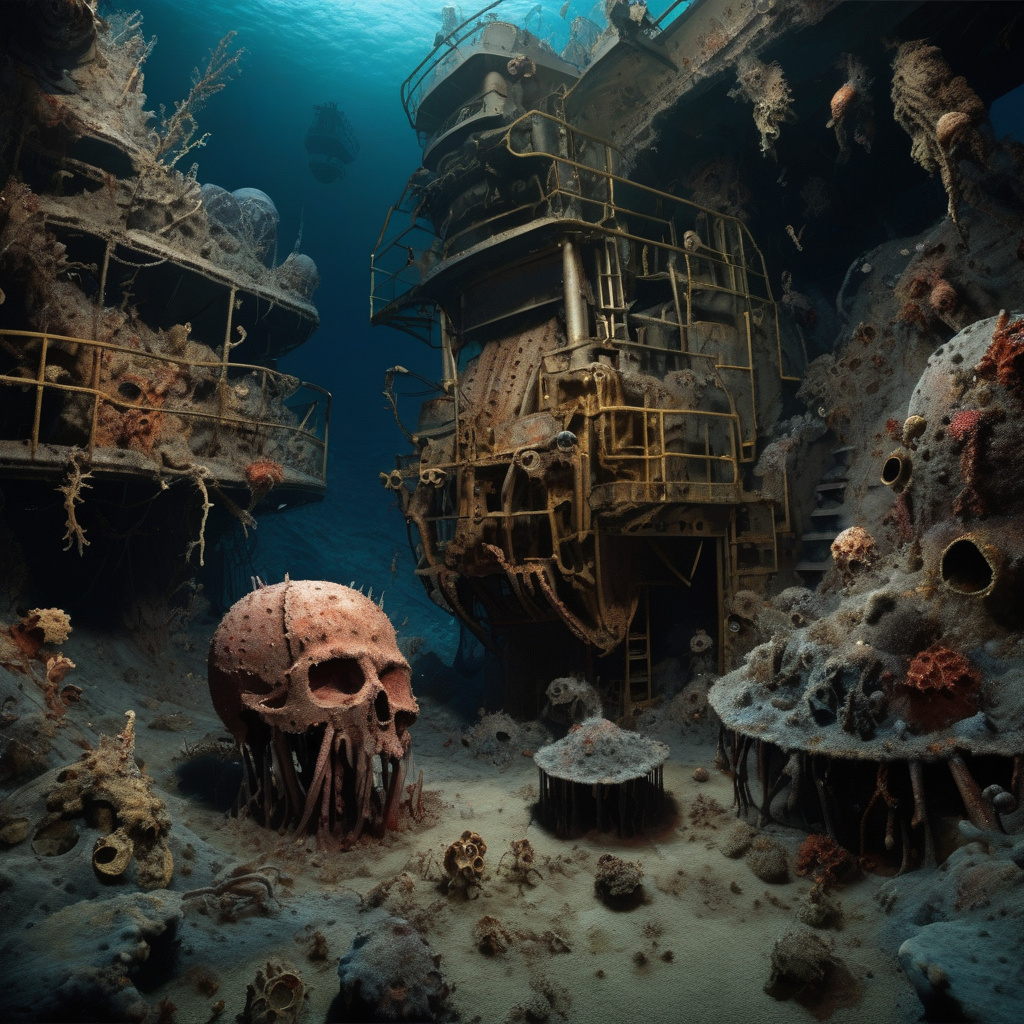Scars of the sea: World’s first deep-sea mining still haunts the ocean floor
The Blake Plateau, an astonishing deep-sea mountain range, features striking pillars of marine life alongside a vast array of underwater ecosystems. However, beneath the surface beauty lies a haunting reminder of humanity’s impact on the ocean floor – the scars left by the world’s first deep-sea mining operations.
In the quest for valuable minerals such as copper, gold, and rare earth elements, mining companies have ventured into the depths of the ocean, disrupting fragile ecosystems that have thrived undisturbed for centuries. The process involves using large machines to extract mineral deposits from the seabed, causing significant damage to the surrounding marine life and habitats.
One of the most significant impacts of deep-sea mining is the destruction of hydrothermal vent systems, which are home to unique and often undiscovered species. These vents release mineral-rich fluids into the ocean, creating oases of life in the deep sea. By mining these areas, we not only risk driving species to extinction but also losing the opportunity to study and learn from these incredible ecosystems.
Furthermore, the sediment plumes generated by mining activities can smother delicate organisms such as deep-sea corals and sponges, which provide essential habitat for a variety of marine life. The disruption of these habitats can have far-reaching consequences for the entire ecosystem, leading to a loss of biodiversity and potential collapse of entire food chains.
Despite the environmental risks, deep-sea mining continues to expand as demand for minerals grows and terrestrial deposits become harder to access. The International Seabed Authority, the organization responsible for regulating mining activities in international waters, has issued a number of exploration licenses to countries and companies eager to exploit the riches of the deep sea.
However, the scars left by the world’s first deep-sea mining operations serve as a stark warning of the long-term consequences of our actions. As we venture further into the depths of the ocean in search of resources, we must consider the true cost of our endeavors and strive to minimize the impact on these fragile ecosystems.
In response to growing concerns about the environmental impact of deep-sea mining, some countries and organizations are calling for a moratorium on mining activities until more is known about the potential consequences. They argue that the precautionary principle should guide our actions in the deep sea, urging us to prioritize the protection of these unique and vulnerable ecosystems over short-term economic gains.
As we look to the future of deep-sea mining, it is essential that we take a balanced and informed approach that considers both the benefits and risks of these activities. By working together to develop sustainable mining practices and robust environmental regulations, we can ensure that the scars of the sea are not our lasting legacy on the ocean floor.
#deepseamining, #oceanfloor, #environmentalimpact, #marineecosystems, #sustainablepractices












